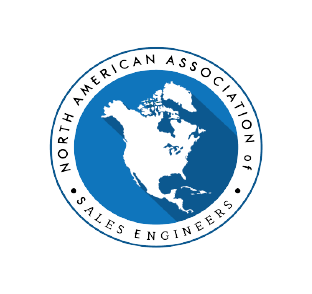North American Association of Sales Engineers
Presentation version Conversation
15.3 Billion trees are cut down each year across the globe. I dare say a number of these wind up being used for business presentations that quickly make their way then to the paper shredder. You like me have probably sat through that massive deck or presentation; you know the one, a 60 plus pages where your eyes glossed over at about page 6. And where the presenter is hell bent on getting through it in an hour. I once worked at a firm that was all about the presentation. The bigger the better. At one point we were taught to memorize it complete with specific page transitions. It was kind of a one solution fits all and we were delivering it whether you wanted to hear it or not. As I look back it was probably this that created my disdain for a presentation for all occasions. Let’s face it some people need a presentation as a guide for their thoughts, for them not having a presentation would be like jumping out of an airplane without a parachute. For others who have the enviable skill to speak extemporaneously and in detail without the assistance of notes and slides, a presentation is like a straitjacket that needs to be avoided at all costs. For the latter Irish people call it “The Gift of the Gab”, others have a few choice names for it as well.

Having been on thousands of sales calls over the years I was often joined by my key linkages at meetings. A few days before the meeting, I would get that e-mail that would say, “Hey can you share with me the presentation for the call?” Most of the time I would be responding that there was none. I would have loved to have been in the room when they read the e-mail, as I am sure it was a mixture of disbelief and worry. No presentation, what are we going to do? What will I tell my leader? Where is the proof that we are working on this account? With the product that I sold; it was rarely a one call close. Much had to be done before we got to that point. Usually we needed first to have a conversation, build rapport, learn about the prospects business, and ask lots of questions about how they did things. Who their customers were and what their thoughts and perceptions were about our organization? What were their financials like and how was their business run and finally were there any technical hurdles that needed to be overcome to make a deal work? After that conversation and with the answers we received, we then could and only then begin the process of putting together what we wanted to present, fitting their needs with our services. On occasion clients would tell us they had no interest in Marketing, right there we could eliminate upwards of twenty pages. Simply put, to present before we asked the right questions would be like slinging you know what on the wall.
Still it never ceased to amaze me how many salespeople within organizations think differently. I am not sure if these salespeople are just uncomfortable or afraid to have a conversation, but they seemed to always have a presentation as a crutch. There is a propensity as we say to show up and throw up. Too often as salespeople we are afraid of the “No”. So, to head that decision off, instead of asking the right questions, we go right into telling, selling, and presenting. Despite good intentions this is a turn off for the prospect. In companies today particularly larger organizations standardization is the normal and it takes a brave individual to stand up if this is the case to buck the need for sales presentations at every turn. A good salesperson following on from asking the right questions will get to the presentation if needed once they know what they need to sell.
Some of the largest deals I sold in my career were sold with a single sheet of paper. In my case I liked to listen to the client to hear what the true objections were, and, in my case, it was usually cost, not price. There is a difference. Once I could establish that cost was somewhat neutral and more about return the conversation shifted to enablement and growth. Without addressing this major issue on calls, no number of pages telling them how great our brand was, would change their mind.
Salespeople need to lead the sales process, do not be led or influenced by what others think should be done. Trust your judgement and instincts with your customer. Be bold and assertive on what needs to happen in your sales process and you just might save a few more trees (and/or “cloud” data space) along the way.
Roger McNamara Bio:


